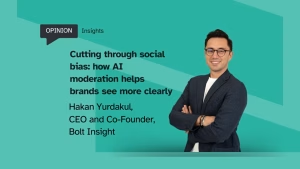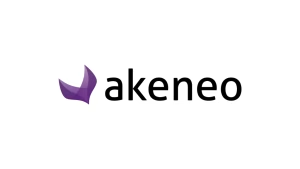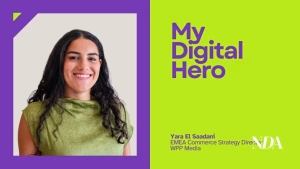By Jill Coomber, MD Integrated Marketing, Allison+Partners
As COVID-19 continues to spread around the world and has forced economies to lock down, it becomes clear that only those businesses which able to quickly adapt to and reflect our changing reality will avoid being left behind. When it comes to B2B brands, it may be far too early to know every impact of ‘life after lockdown’ – no event in living memory has had such an abrupt and sudden change on the way we work, play, think, finance and consume – but we can certain see trends appearing.
Even prior to lockdown market-leading B2B businesses recognised that they could no longer ‘easily’ build their brands and generate leads by simply creating a logical argument for why their products were the right solutions for a problem.
Since the pandemic purse strings and budget have tightened so to truly engage with customers’ needs, B2B brands need to embrace this change even more. Evolution is happening in front of our eyes.
What does it mean to ‘talk human to me’?
The trend towards the humanisation of B2B marketing models itself on the success seen in consumer marketing. In fact, most of the world’s most iconic consumer brands have built huge, loyal followings based on emotive, empowering language. “Just Do It.” “Think Different.” “Because You’re Worth It.”.
As empathy, trust and care become increasingly vital brand currencies, more B2B brands are following suit and looking to talk more emotively.
Talking human allows brands to speak just like their customers – on an emotional and rational level, rather than between two faceless businesses. It recognises that people buy from people and puts this concept at the heart of brand messaging.
The challenge to humanising your B2B brand
A recent study by global marketing and communications agency, Allison+Partners, found that 58% of B2B marketers believe that humanising their brand will lead to higher sales, while 55% would expect to see more engaged customers and a further 55% expect increased customer retention.
This indicates that whilst B2B marketers understand the need to evolve their current brand strategy in favour of a more human connection and conversations to engage with their audiences, they struggle to put this into practice.
The most common challenges marketers face when humanising their brand:
- Understanding the needs and priorities of different customer audiences (47%)
- Creating content in the right tone or language (45%)
- Developing new messaging for this change (44%)
How to start talking human
Know your audience
The first way to look at humanising your brand begins with understanding your audience and crafting authentic messages that will resonate. Fortunately, there are more ways than ever for businesses to communicate with their audiences online, such as polls, social media, webinars and online panels. Make sure you are clear on your target audience and take the time to map their pain points and needs at each stage of the buying cycle. This is crucial to be able to develop content that strikes the right emotional and rational tone. Keep your data and insights updated to make better-informed content and messaging decisions.
Invest in the story
Switching from ‘tech and spec’ to emotional connection takes work. One of the top challenges our respondents faced when marketing their brands was communicating differentiation from competitors (40%), so finding the ‘white space’ in your market is vital. Take the time to run storytelling workshops with key team members from across the business to ensure the brand story is built from the ground up. Introduce a diverse group with different backgrounds, skill sets and roles to ensure the end result is a creative narrative that resonates widely and evokes the emotion you aim for.
A ‘one-size-fits-all’ approach to content won’t wash
While your overarching brand story and messaging must often need to work across different target audiences, your content pieces shouldn’t be a ‘catch-all’. The story that will spark emotion in a C-suite decision-maker will tie into what keeps them up at night: saving their business money and driving growth. Whereas a Head of IT’s emotional triggers will be linked to ease of roll out, adoption and the happiness and efficiency of teams. Spend time on content strategy and channel planning to ensure the best return on investment.
Find the right people to inject humanity into your brand.
For your spokespeople, think less about their CV and more about their stories – the things people wouldn’t expect. How has a chance human connection made them see things differently, or how did an unplanned meeting lead them down a whole new career path? Great teamwork is often based on the nuggets of information you share in small talk when making your morning coffee. To be an extension of the team for your customers, this is a valuable first step.
Close the loop with data.
Take quick Pulse surveys regularly and when major events take place to see what your audience thinks. Hedge small bets with paid campaigns to test different visuals and storylines to see what works and optimise it. Test your messaging and content with people from other teams. Or even better, hunt for friends of friends or family members who fit within your target persona group. Dedicated measurement and analytics are vital to understanding your customers, how to create content on a more human level, and how to evolve it as time goes on.
These challenges have never been more relevant than in 2020. Every customer has been affected differently by this year’s events. Striking the right tone to suit multiple perspectives in an emotionally charged time is an evolving challenge. While B2B brands know their goal here, many have struggled to find the right path forward… so far. The way people view and interact with the world around them is changing more quickly than ever before. B2B marketers with their finger on the pulse and engaging in open conversations with their customers will ultimately prevail.










